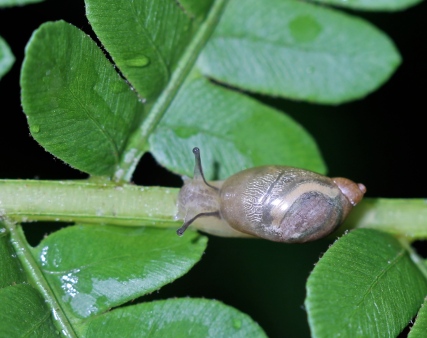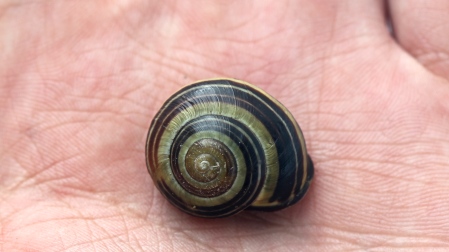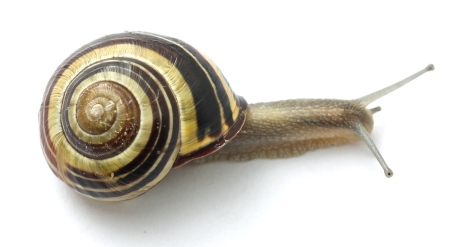A few weeks ago my mom brought home a large snail shell that she had found at the foot of a city tree in South Boston. Usually neither she nor I had paid too much attention to snails and slugs, but this one was clearly unique. With its bright black and yellow stripes on a rounded shell with a width of about 2 cm, this was like no other snail shell I’d ever seen. I suspected that it was non-native, simply because of its large size and colorful markings. However, since my favorite identification website, BugGuide, covers only arthropods (and snails are gastropods), I figured that it might be well nigh impossible to find an ID for the critter. Since it was a dead, empty shell, I left it to my mom and went back to the insects.
Two days later, I had completely forgotten about the shell when my mom asked me if I had taken it. Of course I hadn’t, I replied. She hadn’t either, but it was missing from its spot on her dresser, where she had placed it, intending to draw and preserve it. Well, this was a mystery, as neither of us had moved it, and nobody else had been in the house. The thought popped into my head that perhaps it was not as dead as it had seemed. I checked behind the dresser, and lo and behold, there was the snail, attached to the wood frame of the dresser back! After peeling it off, there was no question that it was very much alive and well. What’s more, I discovered its slime trail on the top of the dresser, winding this way and that, and finally going behind the frame. I did wonder why it hadn’t moved for two days, but I am guessing that it was trying to hold out for water (houses are pretty dry places), and when none came, it decided to look around for itself but didn’t get far.
A habitat was quickly constructed for the obviously dehydrated animal, with some decaying wood, leaves, and of course plenty of water. Now that it had a backstory, I figured it was time to actually try for an identification. I posted a photo of it to BugGuide, asking if anyone knew of any good snail resources for the northeast. I was directed to the Terrestrial Mollusc Tool, and browsing through the photo galleries there, I spotted individuals from the genus Cepaea which looked awfully similar. Doing some additional research on other websites, including Wikipedia, I came to the conclusion that my snail was most likely Cepaea nemoralis, the Grove Snail, based on the dark brown color of the apertural lip (as opposed to a white lip in C. hortensis, a closely related species). Both species are European introductions established in the northeastern United States. They are highly polymorphic, with numerous color forms, and the genetics of this polymorphism have been very well studied. It is a slow growing species, usually requiring three years to fully mature, and it can live up to eight years.
So the end result of all this is that now I have a new pet snail.

A side effect of my snail research is that I now know that the most common species of snail in my yard is an ambersnail (Succineidae), of which there are several introduced species in Maine.


